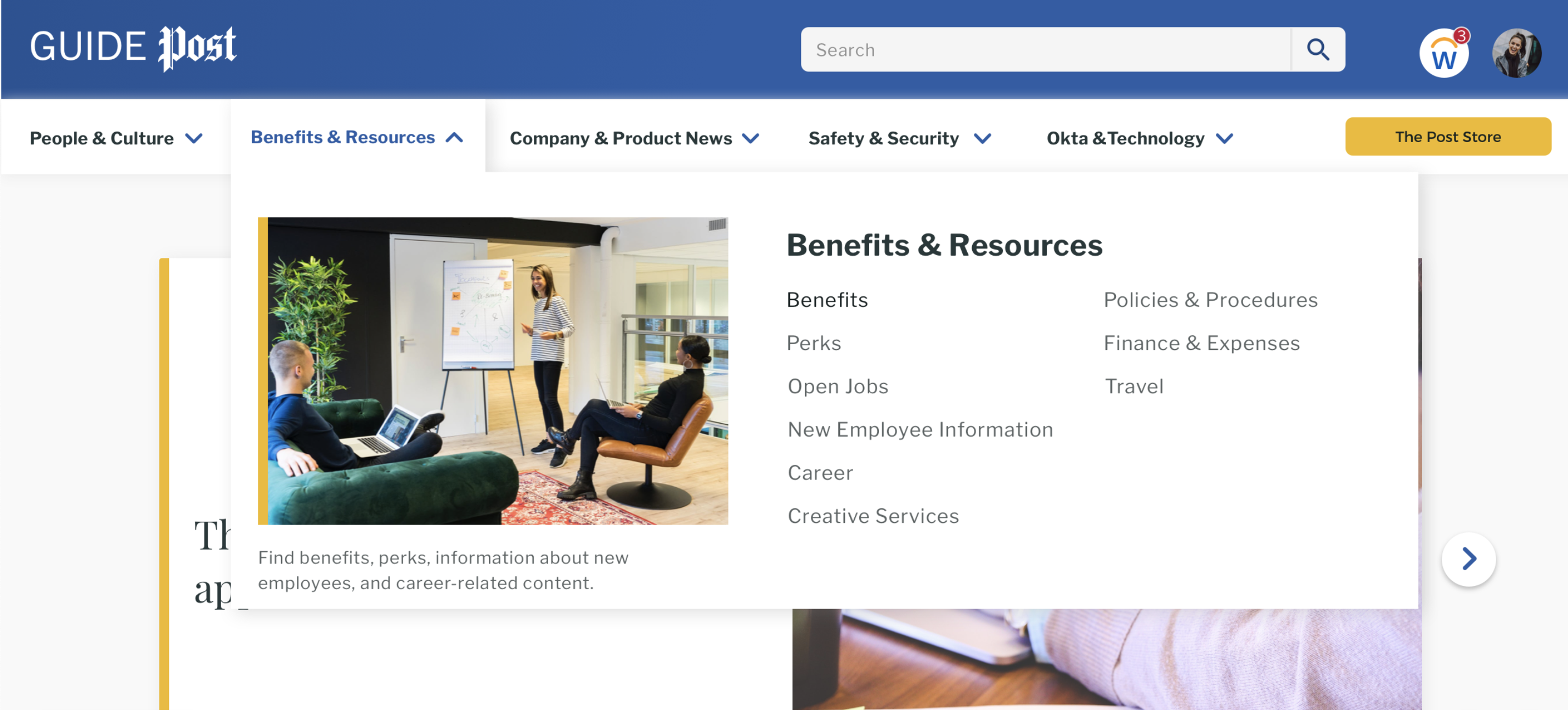Upgrading a central Hub for employees





Being able to identify your users is important to building a successful solution. Personas are conceptual tools created to develop and validate design ideas. The personas reflect aggregated and synthesized traits of people interviewed during research.

We also wanted to rule out any assumptions by verifying our site map decisions. Card sorting & tree testing allowed us to assess the current architecture of the intranet and create a more informed sitemap proposal.
From our card sorting and tree testing session, we found that users had a hard time differentiating resources once they reached the 'Employee Resources' section of the website.

The above image is part of the tree testing activity results. We conducted a remote activity where users were provided with a scenario & given specific tasks to complete. The goal of the activity was to see which path or options made sense to the user.
We then looked at the activities with a high failure rate to see which part of the current site map caused some confusion. Ultimately, this method of research let us go back and revisit some areas of opportunity within the sitemap.
With the research conducted and analyzed, our sitemap was organized so users could easily locate resource online. Below is a snapshot of the sitemap generated for mapping resources in our new design.
To build the best experience, we wanted to have consistent layouts throughout the website. in order to meet the goal requirements of the new intranet, we needed to confirm that the proposed layout templates met those business requirements (event registration, social integration, workday integration, etc).
Collaborating is an important part of creating great solutions. Working together with other stakeholders through design sprints, interviews, and other methods helped elevate the user experience.

This process usually starts with understanding our stakeholders vision for the product. Through interviews and design sprints, the goal is to create a product that resonates with our leaders & employees. During our interviews, one of our questions was the following;
if you could describe this product with three words/attributes, what would they be?
This question is mean to uncover the tone/voice of the product or brand. Using the practice of color theory, I could then align a brands voice and turning wireframes into a digital product

